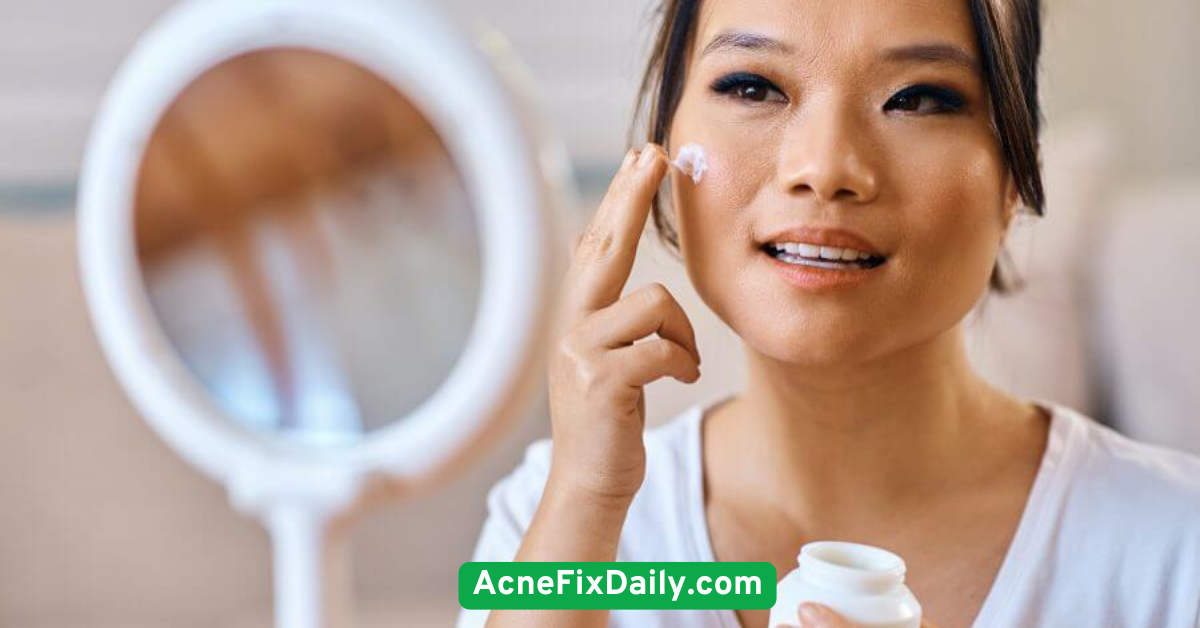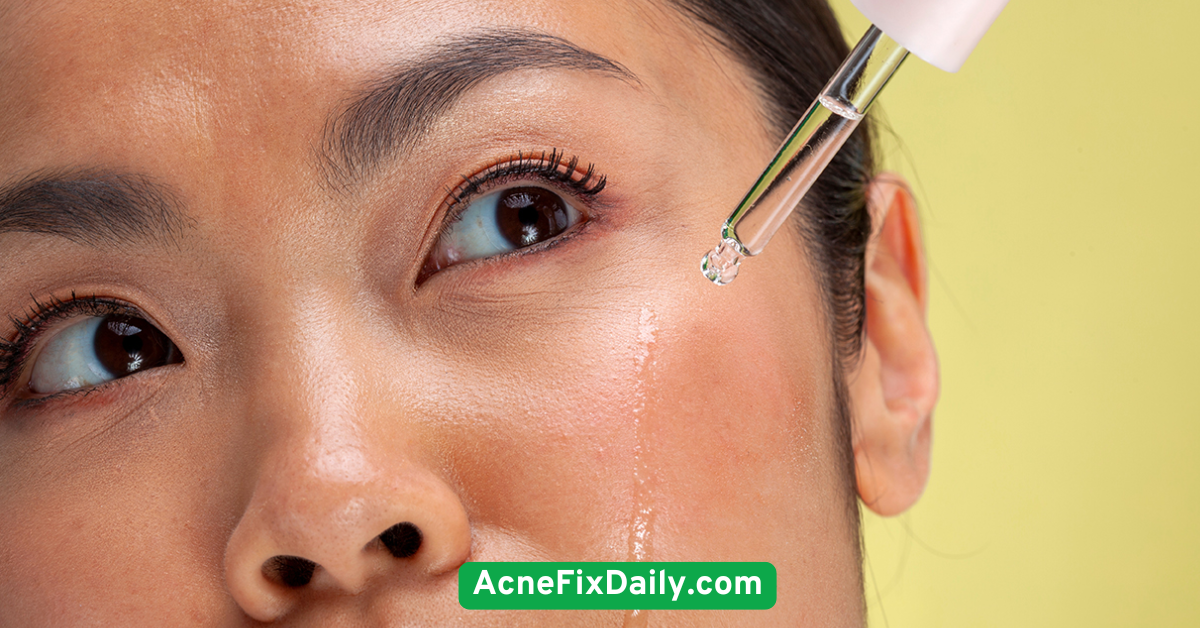20 Mattifying Skincare Tips for Acne Control
Acne and oily skin can often feel like a never-ending battle. You wake up hoping for a clear complexion, only to find excess shine or new blemishes popping up. If you’ve ever struggled to find skincare that controls oil without drying out your skin, you’re not alone. The good news? There are effective, budget-friendly ways to mattify your skin while keeping acne at bay.Mattifying skincare focuses on reducing excess oil production and shine, helping you achieve a fresh, balanced look throughout the day. By combining the right products and habits, you can control acne flare-ups without harsh ingredients or costly treatments. In this article, I’m sharing 20 mattifying skincare tips to help you get clearer, shine-free skin — all while staying gentle and affordable. Ready to take charge of your skin? Let’s dive in!
1. Use a Gentle Foaming Cleanser
A key step in any mattifying routine is cleansing your face without stripping it of natural oils. Gentle foaming cleansers are perfect for oily, acne-prone skin because they remove dirt and excess sebum while preserving your skin’s moisture balance. Avoid harsh soaps or cleansers that leave your face feeling tight or dry, as they can trigger more oil production as your skin tries to compensate.Look for formulas with ingredients like salicylic acid or tea tree oil, known for their acne-fighting and oil-controlling properties. Using a mild foaming cleanser twice daily — morning and night — will keep your skin fresh, unclog pores, and prevent breakouts without irritation.

2. Incorporate Salicylic Acid in Your Routine
Salicylic acid is a superstar ingredient for controlling oily skin and acne. It penetrates deep into the pores to exfoliate dead skin cells and clear out excess oil, which helps reduce blackheads and whiteheads. Regular use can also soothe inflammation and prevent future breakouts.You can find salicylic acid in cleansers, toners, serums, or spot treatments. Start slow — maybe every other day — to see how your skin reacts, then adjust accordingly. Salicylic acid is effective yet gentle enough to use daily if your skin tolerates it well.

3. Opt for Oil-Free Moisturizers
Moisturizing is crucial, even if you have oily skin! Skipping moisturizer can confuse your skin, making it produce even more oil. But not all moisturizers are created equal — for acne-prone, oily skin, opt for lightweight, oil-free, and non-comedogenic moisturizers.Gel-based or water-based moisturizers are ideal because they hydrate without heaviness or greasiness. Look for ingredients like hyaluronic acid and niacinamide, which hydrate, calm redness, and improve skin texture without clogging pores.

4. Apply a Mattifying Primer Before Makeup
If you wear makeup, a mattifying primer is your best friend. Primers help control shine throughout the day and provide a smooth canvas for foundation. Many mattifying primers contain ingredients like silica or kaolin clay that absorb oil and reduce the appearance of pores.Applying primer after your moisturizer but before makeup creates a barrier that controls excess oil and keeps your look fresh longer. For budget-conscious shoppers, drugstore brands often offer excellent mattifying primers that deliver results without breaking the bank.

5. Use Clay Masks Weekly
Clay masks are a fantastic natural way to deep-clean your pores and absorb excess oil. Ingredients like kaolin and bentonite clay pull out impurities and tighten pores, leaving your skin feeling fresh and mattified.Use a clay mask once or twice a week to detoxify your skin and reduce shine. Be careful not to overuse — too much clay can dry your skin, causing it to produce more oil. After rinsing, follow with a gentle moisturizer to keep your skin balanced.

6. Avoid Harsh Scrubs and Over-Exfoliating
Exfoliation is important, but overdoing it can backfire — harsh scrubs can irritate the skin and strip away natural oils, triggering increased oil production and inflammation. Instead, opt for gentle exfoliants like chemical exfoliators (AHA or BHA) that dissolve dead skin cells without abrasive scrubbing.Aim for exfoliating 1-2 times a week to keep pores clear and skin smooth. Remember, less is more when managing oily, acne-prone skin.

7. Use Non-Comedogenic Sunscreen
Protecting your skin from UV damage is essential, especially if you use acne treatments that increase sun sensitivity. The key is to choose a non-comedogenic, oil-free sunscreen that won’t clog your pores or add extra shine.Look for lightweight, matte-finish sunscreens designed specifically for oily or acne-prone skin. Applying sunscreen daily not only protects your skin but also prevents pigmentation and scarring from acne.

8. Incorporate Niacinamide for Oil Control
Niacinamide, a form of vitamin B3, is a powerhouse ingredient for reducing excess sebum and calming inflammation. It improves skin barrier function and helps regulate oil production, making it perfect for acne-prone skin.You can find niacinamide in serums, moisturizers, and toners. It pairs well with other acne-fighting ingredients and generally suits all skin types, even sensitive skin.

9. Choose Mattifying Foundation Products
Makeup can sometimes worsen oily skin and acne, but the right foundation can help. Opt for oil-free, mattifying foundations that control shine and reduce pore visibility. Powder foundations or long-wear formulas often provide better oil control than cream-based ones.Always remove makeup thoroughly at the end of the day to avoid clogged pores and breakouts.

10. Keep Your Skin Hydrated with Lightweight Serums
Hydration doesn’t have to mean heavy creams. Lightweight serums with hydrating ingredients like hyaluronic acid provide moisture without weight or greasiness. Hydrated skin tends to produce less oil, helping control shine naturally.Incorporate a hydrating serum into your morning and nighttime routines to maintain skin balance and plumpness.

11. Use Blotting Papers During the Day
Blotting papers are a quick, budget-friendly solution for absorbing excess oil on the go without disrupting your makeup. Carry a pack in your bag and gently press on oily areas like your forehead, nose, and chin.They remove surface shine instantly and keep your skin looking fresh without adding products or layers.

12. Avoid Heavy Creams and Oils on Your Face
Heavy creams, oils, and butter-based products can clog pores and make oily skin worse. If you have acne-prone skin, steer clear of thick formulations and rich facial oils.Instead, stick to lightweight, water-based, or gel moisturizers and treatments. Always check product labels for terms like “non-comedogenic” to ensure they won’t block pores.

13. Maintain a Consistent Skincare Routine
Consistency is key in managing oily, acne-prone skin. Sticking to a regular routine tailored to mattifying and acne control helps your skin adjust and improves results over time.Avoid switching products too frequently, and give each new product at least 4-6 weeks to see how it works for you. Patience and routine adherence are essential for lasting clear skin.

14. Use Green Tea-Based Skincare Products
Green tea extract is rich in antioxidants and has anti-inflammatory properties. It can reduce sebum production and calm acne-prone skin naturally.Look for toners, serums, or moisturizers containing green tea. It’s a gentle, effective ingredient that supports skin health without irritation.

15. Incorporate Retinol Carefully
Retinol is a powerful ingredient that encourages skin cell turnover and unclogs pores. While effective against acne, it can initially cause dryness or irritation.Introduce retinol slowly into your routine, starting with a low concentration and using it 2-3 times a week at night. Always pair it with sunscreen during the day, as retinol increases sun sensitivity.

16. Wash Pillowcases and Towels Frequently
Your pillowcases and towels collect dirt, oil, and bacteria that can transfer to your face and worsen acne. Washing them regularly reduces this risk.Aim to change pillowcases at least once a week and use clean towels to prevent breakouts and keep skin healthy.

17. Avoid Touching Your Face Often
Touching your face transfers oil, dirt, and bacteria from your hands to your skin, potentially worsening acne and oiliness.Try to keep your hands away from your face during the day, and wash your hands frequently to minimize this transfer.

18. Keep Hair Away from Your Face to Prevent Oil Buildup
Hair oils and styling products can transfer to your face, contributing to clogged pores and excess shine.Keep hair pulled back or away from your forehead and cheeks, especially if your hair tends to get oily. Washing your hair regularly also helps reduce buildup.

19. Use Toner with Witch Hazel or Tea Tree Oil
Toners containing witch hazel or tea tree oil can help tighten pores, reduce inflammation, and control oil production.Apply toner after cleansing to remove residual impurities and prep your skin for moisturizing. These ingredients provide natural antiseptic and astringent benefits without harshness.

20. Stay Hydrated and Maintain a Balanced Diet
Healthy skin starts from within. Drinking plenty of water helps flush out toxins and keeps skin hydrated. A balanced diet rich in fruits, vegetables, and omega-3 fatty acids supports skin health and reduces inflammation.Limit sugary, fried, and processed foods, as they can trigger acne flare-ups and excess oil production. Remember, glowing skin is a combination of good skincare and healthy lifestyle habits.

Conclusion
Controlling oily, acne-prone skin doesn’t have to mean harsh treatments or expensive products. By following these 20 mattifying skincare tips, you can gently balance your skin’s oil production, reduce shine, and keep acne under control — all while being kind to your skin and your wallet.Consistency and patience are your best allies in this journey. Start with the basics, incorporate products slowly, and listen to your skin’s needs. Remember, great skin is a marathon, not a sprint! Ready to take the first step toward clearer, shine-free skin? Your new skincare routine awaits!





